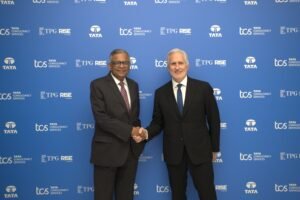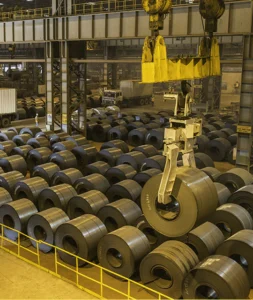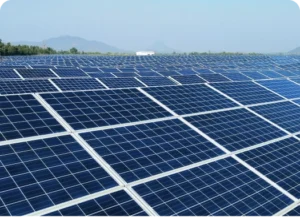New Delhi (Hridaya Mohan): For decades, the H-1B visa has been the golden ticket for Indian engineers, scientists, managers and IT professionals aspiring to work in the United States. Launched in 1990 to attract “specialty occupation” workers, the programme soon came to be dominated by India. By 2023, nearly 71 per cent of all H-1B visas issued annually went to Indians, most of them in the technology sector. The system was so integral to India’s IT boom that it shaped not just career paths but also middle-class dreams.
Then, the mood shifted. The dream has now become harder to pursue. The bridge to Silicon Valley looks narrower. The U.S. administration has tightened the valve and announced sweeping changes: a $100,000 annual fee per H-1B worker, a shift from random lottery to wage-based selection, stricter definitions of “specialty occupation,” tighter employer–employee verification and narrower exemptions for visa interview waivers. For employers, the cost of compliance has soared. For Indian aspirants, the path looks more uncertain. The message was clear: “America First.”
At first glance, this appears to be a major setback. Yet, in the long run, these restrictions could prove to be an inflection point — a moment when India itself emerges as the real beneficiary.
The Forced Pivot: From Brain Drain to Brain Gain
The phrase “brain drain” has haunted India since the 1960s, when its brightest graduates left for opportunities abroad. The IT revolution of the 1990s and 2000s only deepened this pattern, with Bengaluru becoming a launch pad to Silicon Valley. The H-1B system institutionalised this outward flow, turning Indian talent into a critical part of America’s innovation engine.
Now, with the new rules, the economics of H-1B hiring has shifted drastically. Many U.S. employers may hesitate to pay such high fees or may restrict visas only to the most senior, high-value roles. That means fewer entry-level or mid-level opportunities for fresh Indian graduates. As a result, a large share of talent may remain in India — a potential reverse brain drain that keeps skills at home.
India’s Tech Ecosystem Is Ready
Unlike in earlier decades, India today is better positioned to absorb and leverage this talent. The country is the world’s third-largest start-up hub, with more than 110 unicorns and thousands of fast-growing ventures across fintech, ed-tech, health-tech and e-commerce.
Global giants — Google, Microsoft, Amazon, Meta — have set up large R&D centres in Bengaluru, Hyderabad and Gurgaon, employing tens of thousands in cutting-edge research. Meanwhile, sectors such as artificial intelligence, semiconductors, clean energy, defence technologies and space exploration are being prioritised under national missions. India’s Mars and Moon missions, its growing start-up space ecosystem and its advances in 5G and green hydrogen reflect a new confidence. Skilled professionals who might once have worked on someone else’s innovation in California can now find meaningful opportunities in India’s own labs and start-ups.
Economic and Social Multiplier
The retention of skilled professionals within India offers direct and indirect benefits:
- Higher savings and consumption at home, boosting domestic demand.
- Tax revenues that stay in India rather than flowing overseas.
- Job creation in allied sectors — housing, automobiles, education, healthcare, entertainment and services — driven by the spending of a prosperous knowledge workforce.
- Cultural confidence — the sense that young Indians can succeed globally without physically migrating from India.
Returnees from abroad, too, also play a catalytic role. Those who studied or worked in the U.S. and Europe often bring back not just money but also networks, managerial practices and entrepreneurial vision. Many successful Indian start-ups, from Flipkart to Ola, were founded by professionals who returned after overseas stints. A slowdown in H-1B migration may accelerate this trend.
A More Diversified Global Footprint
The U.S. will remain an important destination and another subtle but important outcome is the diversification of Indian talent flows. Canada, Australia, Singapore, the UAE and parts of Europe are already positioning themselves as attractive destinations for skilled migrants, often with friendlier visa regimes. Even if the U.S. path narrows, Indian professionals will not be locked out of global mobility. Instead, India’s presence in multiple geographies will grow, reducing overdependence on the American market.
At the same time, the U.S. itself will continue to need Indian expertise in critical areas, from chip design to healthcare. Selective, high-value migration will persist but mass reliance on H-1B pathways may fade.
The Challenges Ahead
This optimistic picture comes with caveats. For India to truly capitalise, it must strengthen its ecosystem at home:
- High-quality jobs: Professionals will not stay unless there are roles that match their skills and aspirations.
- Competitive salaries: While cost of living is lower in India, wage gaps with the U.S. remain wide. Bridging the salary gap with global markets is essential.
- Research investment: India spends less than 1% of GDP on R&D, compared to over 2.5% in advanced economies. Without greater investment, opportunities may remain limited.
- Ease of doing business: Regulatory hurdles, funding constraints and infrastructure deficiencies remain barriers for returning entrepreneurs and need to be improved.
If these gaps persist, the risk is that frustrated professionals will simply shift their ambitions to other countries with open immigration policies.
A Strategic Inflection Point
Viewed strategically, the H-1B restrictions could accelerate India’s transition from being a supplier of global talent to becoming a hub of global innovation. It is shifting from “Made by India for the world” to “Made in India for the world.” The government has identified sunrise sectors — digital economy, clean tech, deep tech — as engines of future growth. The private sector is investing heavily in AI, design and green manufacturing. If the right policies align — from higher R&D spending to start-up incentives — India can turn this talent retention into a lasting advantage.
In hindsight, history may record the H-1B restrictions not as a blow to Indian professionals but as the moment that triggered a reverse brain drain, empowering India to rise as a knowledge superpower.
About the Author

Mr. Hridaya Mohan (hridayamohan@yahoo.co.in) is a regular Columnist with a renowned Indian daily “The Hitavada”, “Bharat Neeti Media” and some other newspapers / magazines internationally. He lived and worked in Beijing for 6 long years as Chief Representative (China & Mongolia), SAIL. Recipient of “Sir M Visvesvaraya Gold Medal”for one of his papers, “Benchmarking of Maintenance Practices in Steel Industry” from The Institution of Engineers (India), he was awarded with “Scroll of Honour” for the excellent contributions to Engineering fraternity from IE(I), Bhilai, “Jawahar Award” for leadership excellence in SAIL and “Supply Chain Leader – 2017” award from IIMM.









